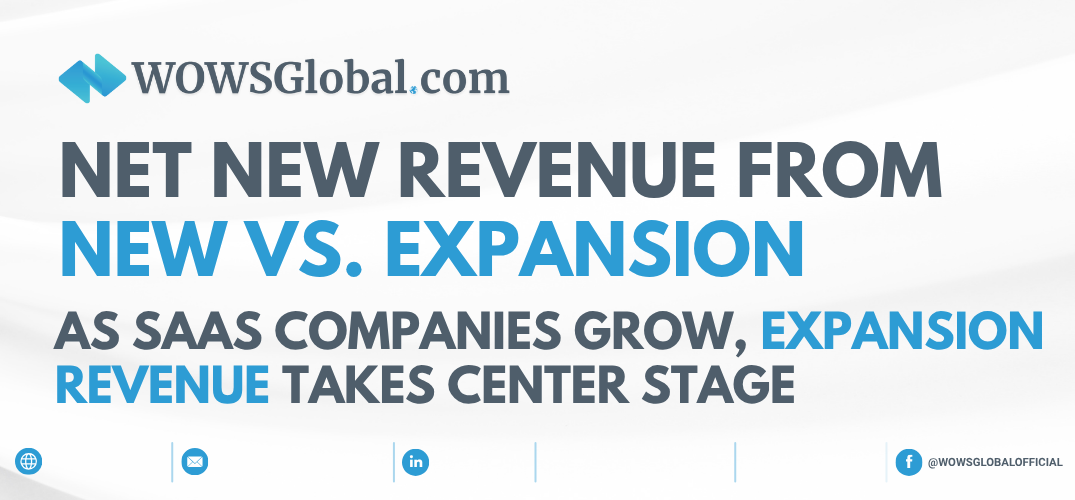NET NEW REVENUE FROM NEW VS. EXPANSION
SaaS AI Startups AI in Southeast Asia SEA 3 Minutes

As SaaS Companies Grow, Expansion Revenue Takes Center Stage
A new snapshot of SaaS performance shows a consistent, and consequential, shift in how software companies generate revenue as they scale. According to the 2024 SaaS Benchmarks Report by High Alpha, smaller SaaS businesses rely overwhelmingly on new customer acquisition, while larger, more mature companies lean far more on revenue expansion from existing customers.
The headline shift
High Alpha’s data tracks the split between new ARR vs. expansion ARR across company sizes. For companies with less than $1M in ARR, a striking 90% of revenue typically comes from new customers, with only 10% from expansion. That mix changes steadily as ARR rises:
-
$1–5M ARR: ~75% new / 25% expansion
-
$5–20M ARR: ~77% new / 29% expansion
-
$20–50M ARR: 65% new / 35% expansion
-
Greater than $50M ARR: 65% new / 35% expansion
The takeaway is clear: once companies cross roughly the $20M ARR threshold, about 35% of total ARR at the median comes from existing customers, upsells, cross-sells, seat growth, usage, and pricing/packaging effects. For leaders managing later-stage growth, expansion is not a nice-to-have lever; it’s a central growth engine.
(Source: 2024 SaaS Benchmarks Report by High Alpha.)
Why the mix changes with scale
Several operational realities drive this pattern:
-
Market penetration and CAC pressure. As companies grow, they’ve often tapped the “easiest” segments of their market. New-logo acquisition becomes more expensive, and payback periods lengthen. Expansion, selling more to customers who already trust the product, offers a more efficient route to durable growth.
-
Product maturity and breadth. Mature companies typically launch additional modules, tiers, and integrations. That creates natural cross-sell paths and increases the surface area for usage-based growth.
-
Customer success as a growth function. Larger organizations are more likely to have dedicated customer success, revenue operations, and lifecycle marketing teams. Those functions professionalize onboarding, drive adoption, and systematize expansion motions.
-
Pricing power. With stronger product-market fit and clearer ROI, later-stage companies can more confidently introduce packaging changes and value-based pricing, lifting net revenue retention (NRR).
What this means for operators at each stage
Early-stage (<$5M ARR):
Keep the main thing the main thing: new logos. The benchmark suggests most revenue will come from new customers, so founders should prioritize pipeline generation, repeatable sales process, and crisp ICP definition. That said, stand up the basics of customer success early, implementation speed and activation are leading indicators for future expansion.
Growth-stage ($5–20M ARR):
This is the transition zone. Expansion begins to matter, approaching 25–29% of ARR in the median case. Invest in product telemetry, health scoring, and structured QBRs. Ensure packaging and entitlements create clear ladders for customers to climb. Start tracking NRR and GRR with the same rigor as new ARR.
Later-stage ($20M+ ARR):
With ~35% of ARR from existing customers at the median, expansion becomes a pillar. Mature teams weave together CS, sales, product, and finance around expansion targets: upsell quotas, adoption milestones, and cohort-based NRR goals. Pricing and packaging reviews become annual rituals, ideally supported by willingness-to-pay research and usage analysis.
Metrics that matter
-
Net Revenue Retention (NRR): A composite metric capturing expansion, contraction, and churn. Best-in-class SaaS at scale often targets NRR ≥ 120% (sector- and pricing-model-dependent).
-
Expansion ARR Ratio: Track expansion as a share of total ARR to benchmark against peers and spot motion gaps.
-
Time-to-Value and Adoption: Leading indicators for future expansion; shorten onboarding, instrument activation, and celebrate early “aha” moments.
Strategic implications
For boards and finance leaders, this benchmark pattern affects planning. Pipelines and budgets that overweight new logos at later stages can misallocate go-to-market spend. Conversely, underfunding customer success, lifecycle marketing, and data infrastructure can cap expansion potential. The steady climb from 10% to 35% expansion ARR, as ARR grows, underscores the need to design for expansion early, even if it won’t dominate the P&L until later.
If your 2025 plan leans on expansion ARR, let’s make it deliberate. Book a short intro call and pressure-test your growth strategy with us.
Related Posts
-

SEA Startup & Venture Capital Proptech Media 4 Minutes
Catcha Group: Company-builders Powering SEA’s Internet Plays
Catcha Group has spent two decades building and backing Southeast Asia’s internet champions, from classifieds and OTT to flexible workspaces. With hands-on operating support and smart consolidation plays, the firm has turned category leaders into headline exits. -

Biotech AI SEA Startup & Venture Capital deep-tech 6 Minutes
Granatus Ventures: Deep-Tech Builders Bridging Armenia and Southeast Asia
Granatus Ventures backs IP-rich startups in AI, biotech, robotics, and advanced/quantum computing, pairing early checks with an Armenia engineering engine and a Singapore touchpoint for SEA pilots. Learn how their SDG-aligned thesis translates into practical capital and deep technical diligence. -

B2B SaaS SEA Startups AI Fintech 4 Minutes
TheVentures: The Quick-strike Seed Investor Shaping Vietnam & Southeast Asia
TheVentures is redefining early-stage speed in Vietnam & SEA, writing quick, catalytic checks and opening doors to follow-on capital across the region. -

Blockchain Singapore Early Startups SEA Startups SEA 4 Minutes
GaiaSwap: The Eco-Commodity DEX Bringing Transparency & Inter-Operability to Fragmented Carbon Credits & I-REC(E)s markets
In a sea of generalist crypto venues, GaiaSwap zeroes in on eco-commodities with transparent pricing and compliant workflows. We unpack what sets it apart and the milestones to watch. -

Cap Table SEA AI Startups Southeast Asia 5 Minutes
The $200M Refill: When Coffee Chains Teach Us About Liquidity
A closer look at Kopi Kenangan’s USD 200M hybrid round—and why mid-journey liquidity, valuation discipline, and payout clarity matter. We break down the mechanics, the incentives, and the playbook for both founders and investors. -

SME KPI Reporting Invest in Startups SEA 5 Minutes
Vimigo: The SME Performance OS Turning KPIs into Daily Wins
We break down how vimigo turns frontline activity into results through recognition-driven performance. Want to explore funding or strategic options in HR-tech? Schedule a call with our investment team today.
